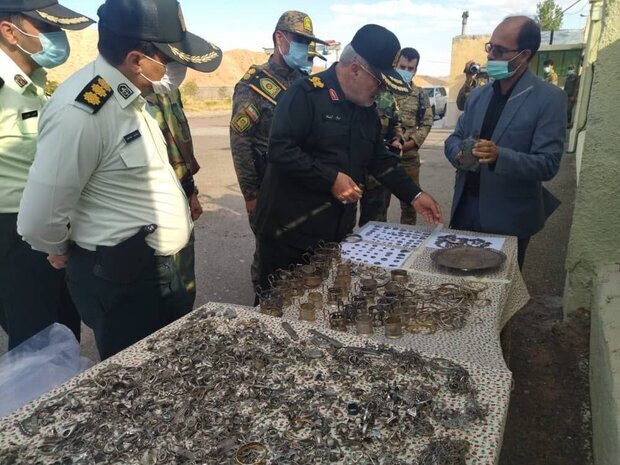INSUBCONTINENT EXCLUSIVE:
TEHRAN - Police have recovered 45 ancient coins and tens of other historical objects from a smuggler in Torbat-e Heydarieh, northeast
Iran.Apart from the coins, over 200 other objects such as rings, pates, bracelets, and a fake rhyton were found by the police while
controlling passing cars, the report said.According to cultural heritage experts, the coins date from the Sassanid era to the Qajar epoch,
Mehr reported on Wednesday.In about 220 CE the Sasanian dynasty of Iran introduced the concept of thin flan coins, issues that were struck
In order not to produce intolerable stresses in the dies, since the thinner the material the more force necessary to make it flow into the
Such techniques spread by way of Byzantium to northern Europe, where the emperor Charlemagne struck thin flan deniers (small silver coins),
or pennies, which became characteristic of both his own and neighboring kingdoms.The Muslim conquest of Persia, also known as the Arab
conquest of Iran, led to the fall of the Sasanian Empire of Iran (Persia) in ca
651 and the eventual decline of the Zoroastrian religion
The rise of Muslims coincided with an unprecedented political, social, economic, and military weakness in Persia
The conquering Muslims at first mimicked the coinage of their predecessors
In the western provinces, they issued gold and copper pieces imitated from contemporary Byzantine coins, modifying the cross on the reverse
of the latter somewhat to suit Muslim sensibilities
In the eastern provinces, the Arab governors issued silver dirhams that were copies of late Sasanian coins (mostly of those of Khosrow II;
with the addition of short Arabic inscriptions on the margin and often the name of the Arab governor in Pahlavi; even the crude
representation of the fire altar was retained.AM

